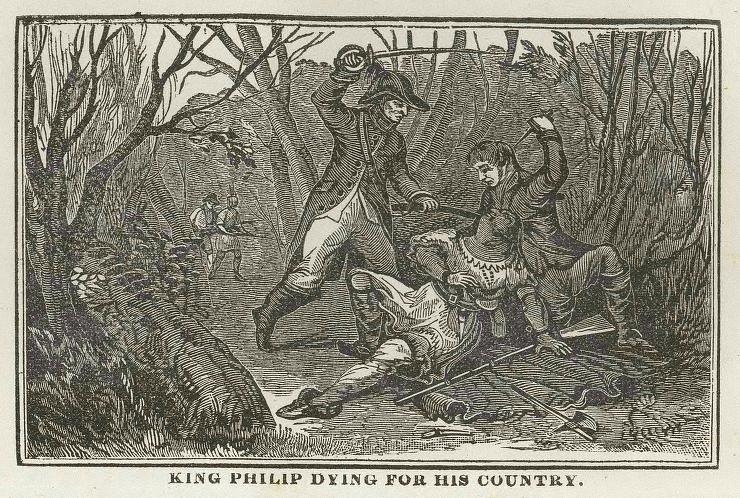|

(c) Pocumtuck Valley Memorial Association, Deerfield MA. All rights reserved.
Place in Time : "A martyr to his cause"
|
|
In the early 1800s, Native people in southern New England were entering their third century of struggle against invasion, disease, war and racism. Meanwhile, white observers in the same period either ignored Native people or relegated them to the past. Town histories and novels like James Fennimore Cooper's The Last of the Mohicans began to refer nostalgically to the "disappearance" of the region's first inhabitants.
These assumptions and attitudes obscured the continuous and ongoing presence of Native people in the region. Although the dominant culture often rendered them invisible, legal documents, family histories, account books and other records reveal their presence. Many Native people continued to move through their homelands in response to occupational opportunities and seasonal rhythms. Traveling ancient routes enabled them to maintain kinship ties and reaffirmed their ties to the land. Others settled permanently in small reserves or enclaves. Still others worked, lived and married into white and African American communities.
William Apes (1798-1839) was a Pequot writer and orator. His writings, orations and activities provide a rare glimpse of life among the Native people of southern New England in the early 1800s. Apes stood out as an advocate for the rights of Native people in a period of discrimination and abuse. In 1836, he delivered his Eulogy on King Philip. The Eulogy defied traditional white interpretations of King Philip's War (1675-1676) and the Wampanoag leader for whom it was named.
English settlers and their descendants viewed King Philip, or Metacomet, as a savage rebel who led the bloodiest war ever fought on American soil. They celebrated his death, and English illustrations of his last moments show him face down in the mud.
William Apes, in contrast, portrayed King Philip as a patriot who died for his country. In a deliberate contrast to English descriptions, Apes depicted Philip's death as a noble and tragic scene. For Apes, King Philip's War highlighted the racism and legal injustices he and other Native people continued to experience in their own day. Even as Apes wrote this scathing indictment of English colonial policy, the United States government endorsed Indian removal in Georgia, Mississippi, and Alabama. This policy forced thousands of Cherokee, Choctaw, Chickasaw and Creek people from their homes. Like his other writings and orations, Apes' Eulogy and its frontispiece publicized the plight of Native people and the daily injustices they suffered.
top of page
|
Frontispiece from "Euology on King Philip as Pronounced at the Odeon"
| author William Apes (1798-1839) |
| date 1837 |
| location Boston, Massachusetts |
| process/materials printed paper, ink |
| item type Books/Booklet - Sermon |
| accession # #L00.005.frex |
|





